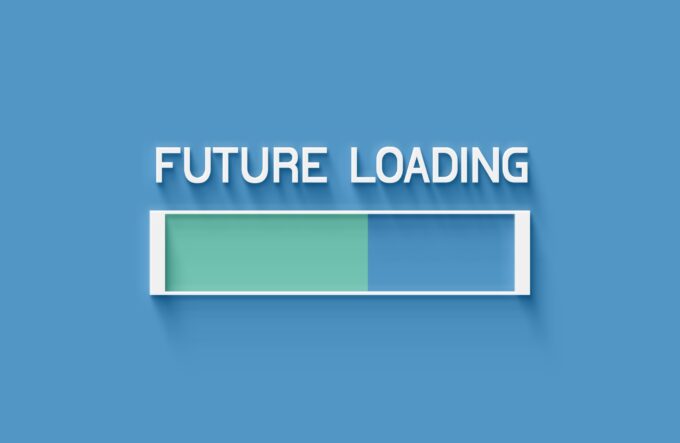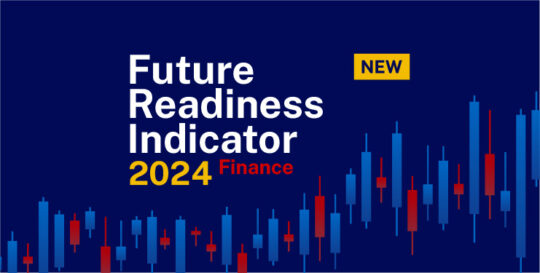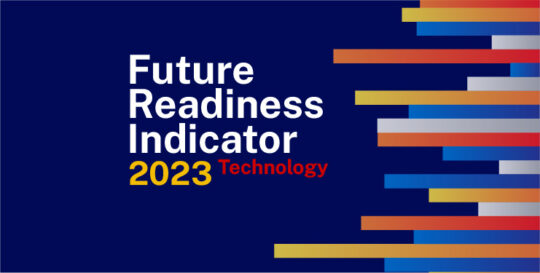IMD business school for management and leadership courses



Being future-ready isn’t a luxury– organizations must perform and transform to survive and thrive
Orinigally published in I by IMD on the 18th of March 2024
The most successful future-ready organizations operate on dual horizons. They continue to perform while transforming and exploiting their core business. They do this by driving efficiencies and continuous improvement while exploring new opportunities with equal effort. To succeed on this twin track, leaders must have strategic clarity and promote a company culture that wholeheartedly embraces change.
Leaders and organizations have always had to adapt to technological changes, society, and the environment. This challenge is not new; what makes our current era unique is the scale, depth, and speed of these changes and the response required from organizations to survive and thrive.
Today, companies must constantly review their strategies and develop new skills – for individual leaders and their teams, and at an organizational level – to maintain their competitive edge.
As we engage with leaders in many sectors across the world, a recurring theme is the mounting pressure on them to navigate and lead against a backdrop characterized simultaneously by massive change, social and demographic shifts, political upheavals, and ground-breaking technological advances, especially in AI (Artificial Intelligence).
A pattern emerges as we observe some of these organizations’ attempts to transform: more than half of these strategic programs struggle to meet their objectives. This is because these efforts are often marred by an internal focus, incrementalism, and a reactive culture that, in turn, traps organizations in a cycle of addressing immediate concerns at the expense of shaping their future. As the saying goes, if you are up to your waist in alligators, it’s easy to forget the original objective was to clear the lake.
But how can companies become future-ready?
Future-ready companies simultaneously focus on performance – for example, delivering results and healthy cash flow – while transforming for the future and funding a future product pipeline. Drawing on examples from global businesses, we can see how organizations that are adept at performing while transforming suffer less in challenging times and create bigger wins in a positive market environment. Future-ready organizations can also pivot faster, and their financial performance outstrips their competitors.

Retail strategy tests courage, stamina, and agility at Nike
Nike pursued a dual-focus strategy of selling sports and street fashion shoes and apparel as a business-to-business company. In the absence of its own manufacturing plans, it engaged smaller-scale suppliers to manufacture products and sold them wholesale through brick-and-mortar retailers and via e-sales platforms globally. In 2016, it took control of its e-commerce offering and launched Nike.com, where it controlled the look and feel – and the relationship with its customer community. As B2B sales still generated the lion’s share of revenue, it had a slow start.
By 2020, however, it had flagship stores in key strategic locations and e-sales of $5.5bn – $4bn higher than in 2016. The Nike.com sales platform was crucial to the company’s success during COVID-19, when lockdowns severely limited sales via traditional retail outlets. It then produced an app with special functionality in its physical stores and online, thus building a community of Nike fans and delivering insights from the app’s invaluable sales and behavioral data.
By 2023, Nike’s direct-to-customer sales through stores and e-commerce had reached more than $20bn, representing 40% of the company’s total revenues, while it had cut 50% of its wholesale accounts since 2018. Also, in what was a challenging year, in 2022, Nike maintained a higher financial market confidence despite a 38% drop in its share price. Competitor Adidas fell 58% over the same period.
Nike’s outperformance and resilience are due to the courage of the leadership in creating an e-commerce channel when its sales through wholesaler channels were strong and remained dominant for many years. Maintaining investment levels in the e-commerce platform required stamina and, crucially, a shared vision for the twin-track future of the Nike brand and its routes to market that put the trade-offs between the channels in a broader context. The company’s ability to pivot to online sales during COVID provided resilience for the whole business.
Nike continues to transform as it again increases partnerships with wholesalers. In an investor presentation last year, Daniel Heaf, Nike’s VP of Nike Direct, said: “People always ask me: Are you a direct business or a wholesale business? And the truth is we’ve chosen both.”
We rank Nike top in the IMD Future Readiness Indicator – fashion brands.
The pharma, technology, CPG, auto, and finance rankings are available here.



Strategy for Future Readiness
Blended program
Transform and equip yourself, your team, and your organization for the future.
Leaders must create the conditions for success
Much of building future readiness is anchored in both the leadership and team behaviors necessary for them to scale up new capabilities. These include promoting mutual trust, psychological safety, and diversity of thought while avoiding human decision bias and groupthink. Another key element of future readiness is pulling these behaviors together to create and sustain a culture of growth. Hence, people continue to build their career journeys – and the organization.
However, leaders in civil society and corporations try to tackle problems alone, perpetuating the ‘strong leader with all the answers’ stereotype. Today’s leaders must learn to ask questions and cultivate the art of ‘humble inquiry’ rather than give orders. They must frame the work accurately, admit and display their fallibility, invite engagement, and respond productively.
As an added benefit, leaders who make themselves available and promote clarity and debate create psychological safety for their team and nurture an environment where ‘dynamic delegation’ can flourish. In practice, this means team members without formal authority can lead on specific issues because they have an idea, suggestion, or expertise to solve the problem. This leadership humility – to be willing and open enough to give away authority – recognizes that other people may be better qualified to lead, guide, and ultimately find a workable solution that reflects well on everyone.
Failing forward to win
Playing to win requires courage and the understanding that failure is part of learning and, therefore, a fundamental component of success. There is a new paradigm shift of embracing both success and failure – but not just any failure.
There are broadly three types: First, basic preventable failure, such as when a faulty component fitted to a car causes it to malfunction. Second, complex failure, where a number of factors come together within a familiar yet complex environment – for example, administering a medication to a patient who has a known allergy or failing to label a laboratory specimen that is subsequently ascribed to the wrong patient, causing the patient to die. Third is failing intelligently, where taking thoughtful actions and smart risks results in helpful learning opportunities and the ability to move forward more wisely and in new territory.

In this respect, Elon Musk’s SpaceX Starship launch, which resulted in a ‘rapid unscheduled disassembly’, provided a raft of engineering data to identify problems and feed into refining the approach for the next launch. Nobel prize-winning physicist Richard Feynman said in a speech about how we learn about the laws of nature: “We’re trying to prove ourselves wrong as quickly as possible. Because only in that way do we find progress.”
This type of ‘failing forward’ is a team sport played within an environment that builds psychological safety – the ‘care’ – while embracing the ‘dare’ – accountability. So, where innovation is often measured in inches, intelligent failure can make progress by the meter or kilometer.
Key insights
In support of building the ability to perform and transform, the company needs to develop a culture around new behaviors and attitudes:
- Future-ready leaders will create a shared viewpoint of how things work in the long term to accommodate the trade-offs between performing and transforming. In this way, they will encourage and embrace healthy debate while building strong trust and creating synergies.
- Being future-ready requires a company to scale up new capabilities, including developing the necessary leadership and team behaviors.
- Future readiness supports resilience and growth for the organization and its people. Creating a psychologically safe place can unleash powerful collective problem-solving and build future resilience.
- The path to success is paved with intelligent failures. Failing forward, or learning as a team, from when things go wrong can accelerate the discovery and implementation of innovative future business opportunities.










